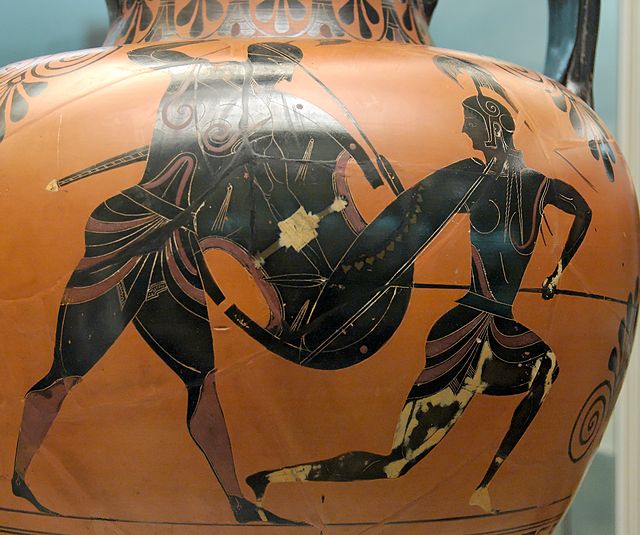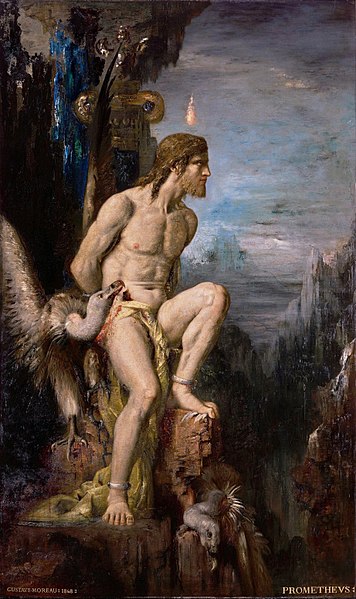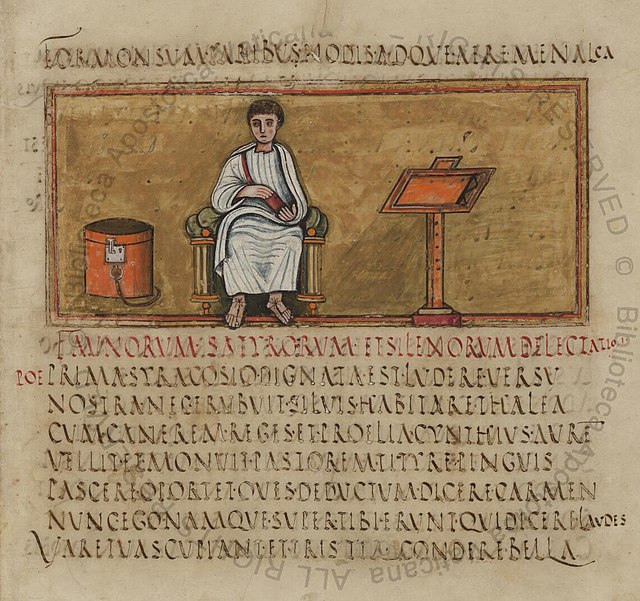In Ancient Greek religion and mythology, Cronus, Cronos, or Kronos was the leader and youngest of the first generation of Titans, the divine descendants of the primordial Gaia and Uranus. He overthrew his father and ruled during the mythological Golden Age, until he was overthrown by his own son Zeus and imprisoned in Tartarus. According to Plato, however, the deities Phorcys, Cronus, and Rhea were the eldest children of Oceanus and Tethys.
Rhea offers the stone to Cronus, red-figure ceramic vase c. 460-450 BC, Metropolitan Museum of Art, New York
The Mutilation of Uranus by Saturn [Cronus], 16th-century oil painting by Giorgio Vasari
Cronus devouring one of his sons, 17th-century oil painting by Peter Paul Rubens
Rhea giving the rock to Cronus, 19th-century painted frieze by Karl Friedrich Schinkel
Greek mythology is the body of myths originally told by the ancient Greeks, and a genre of ancient Greek folklore, today absorbed alongside Roman mythology into the broader designation of classical mythology. These stories concern the ancient Greek religion's view of the origin and nature of the world; the lives and activities of deities, heroes, and mythological creatures; and the origins and significance of the ancient Greeks' cult and ritual practices. Modern scholars study the myths to shed light on the religious and political institutions of ancient Greece, and to better understand the nature of myth-making itself.
Achilles and Penthesileia by Exekias, c. 540 BC, British Museum, London
Prometheus (1868 by Gustave Moreau). The myth of Prometheus first was attested by Hesiod and then constituted the basis for a tragic trilogy of plays, possibly by Aeschylus, consisting of Prometheus Bound, Prometheus Unbound, and Prometheus Pyrphoros.
The Roman poet Virgil, here depicted in the fifth-century manuscript, the Vergilius Romanus, preserved details of Greek mythology in many of his writings.
Phaedra with an attendant, probably her nurse, a fresco from Pompeii, c. 60 – c. 20 BC


![The Mutilation of Uranus by Saturn [Cronus], 16th-century oil painting by Giorgio Vasari](https://upload.wikimedia.org/wikipedia/commons/thumb/4/4c/The_Mutilation_of_Uranus_by_Saturn.jpg/640px-The_Mutilation_of_Uranus_by_Saturn.jpg)





